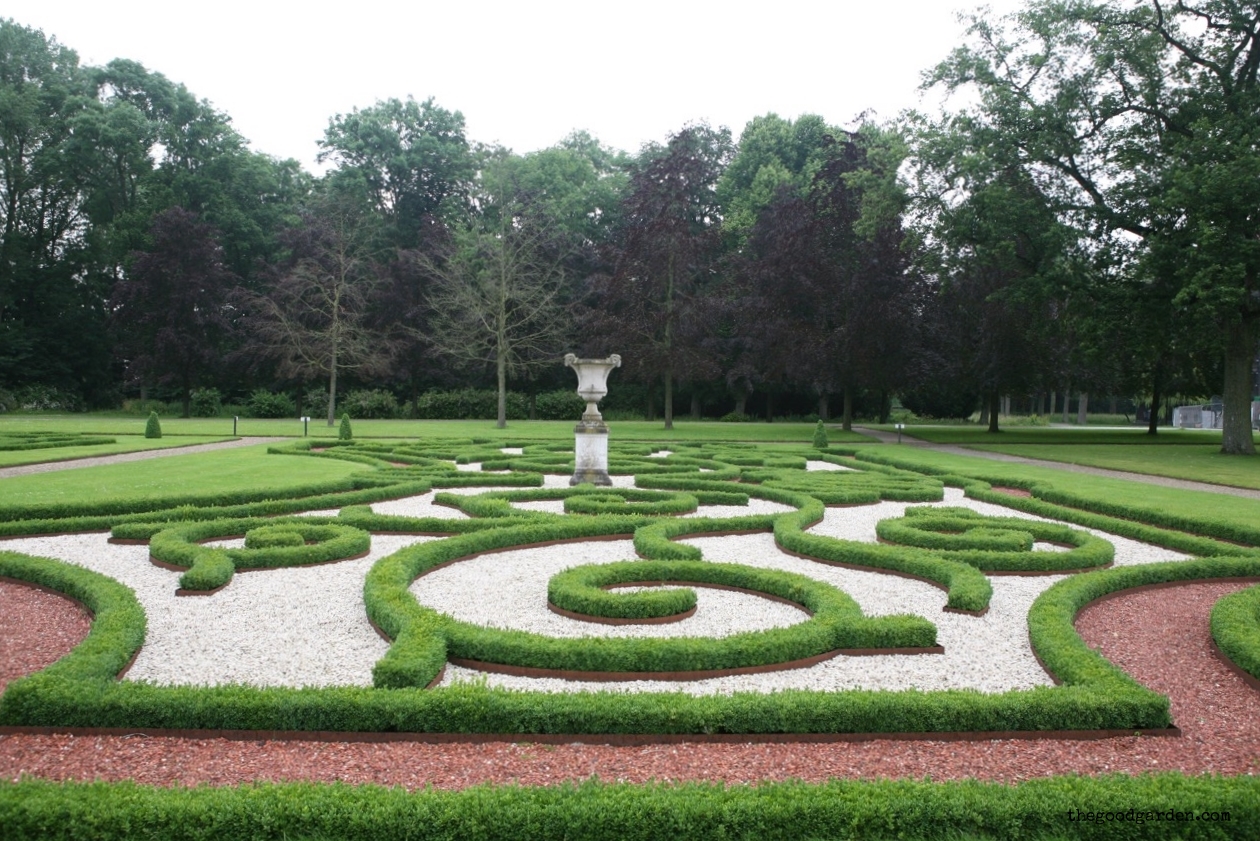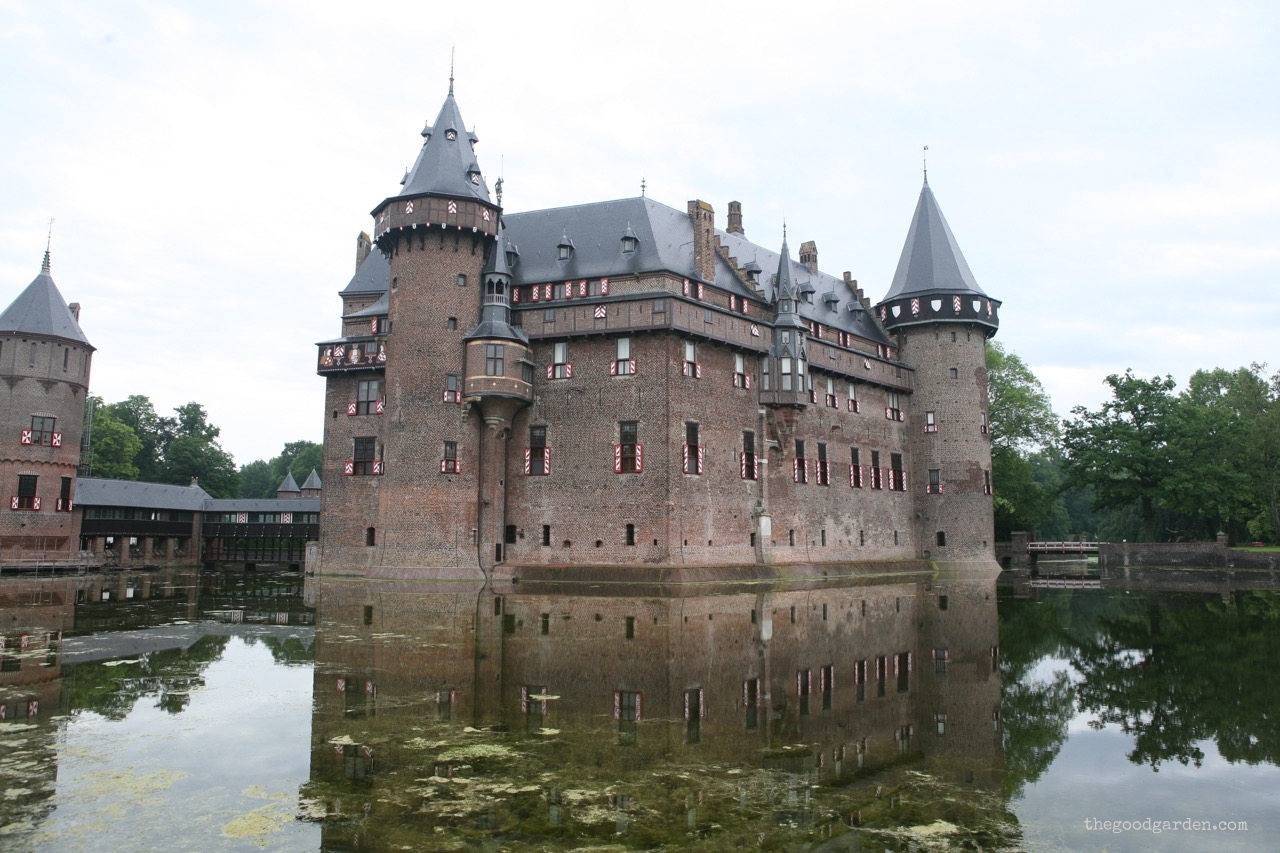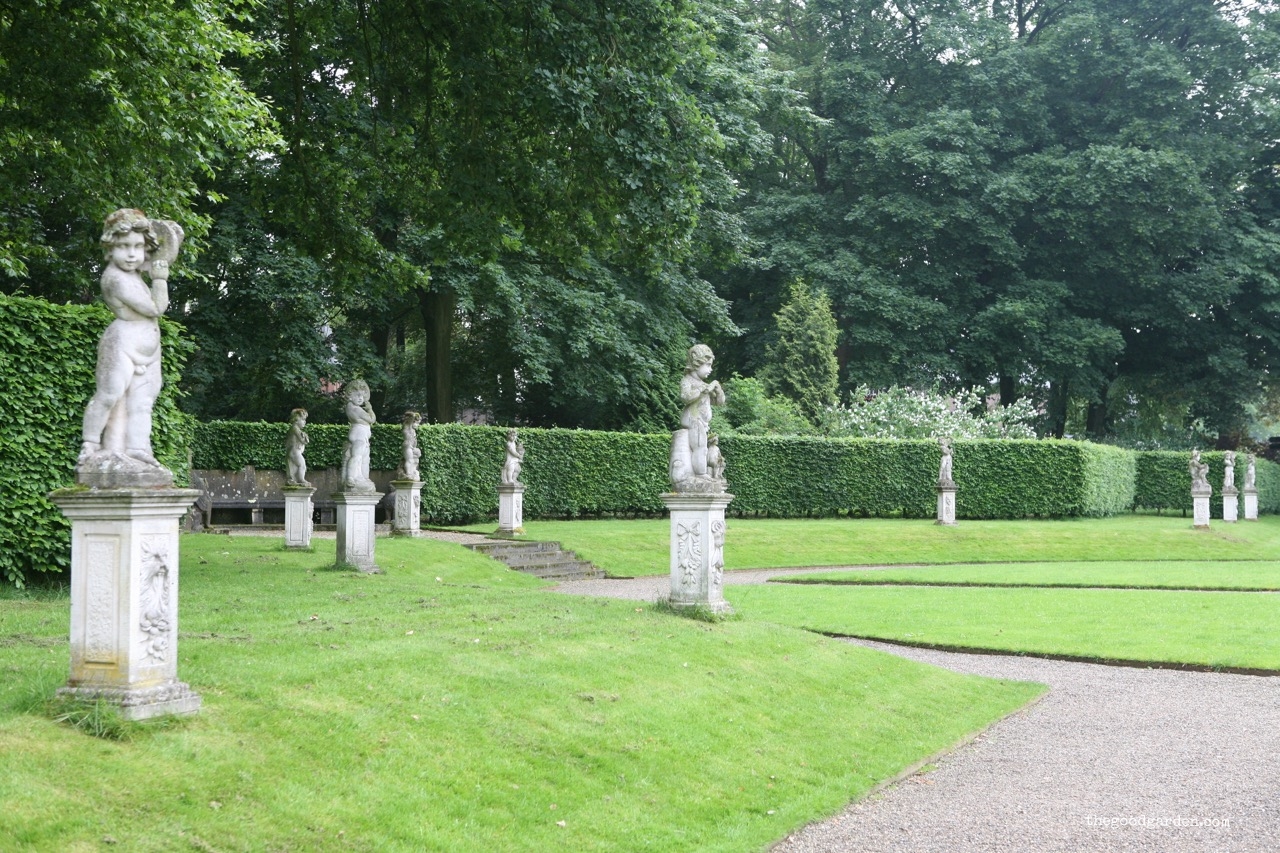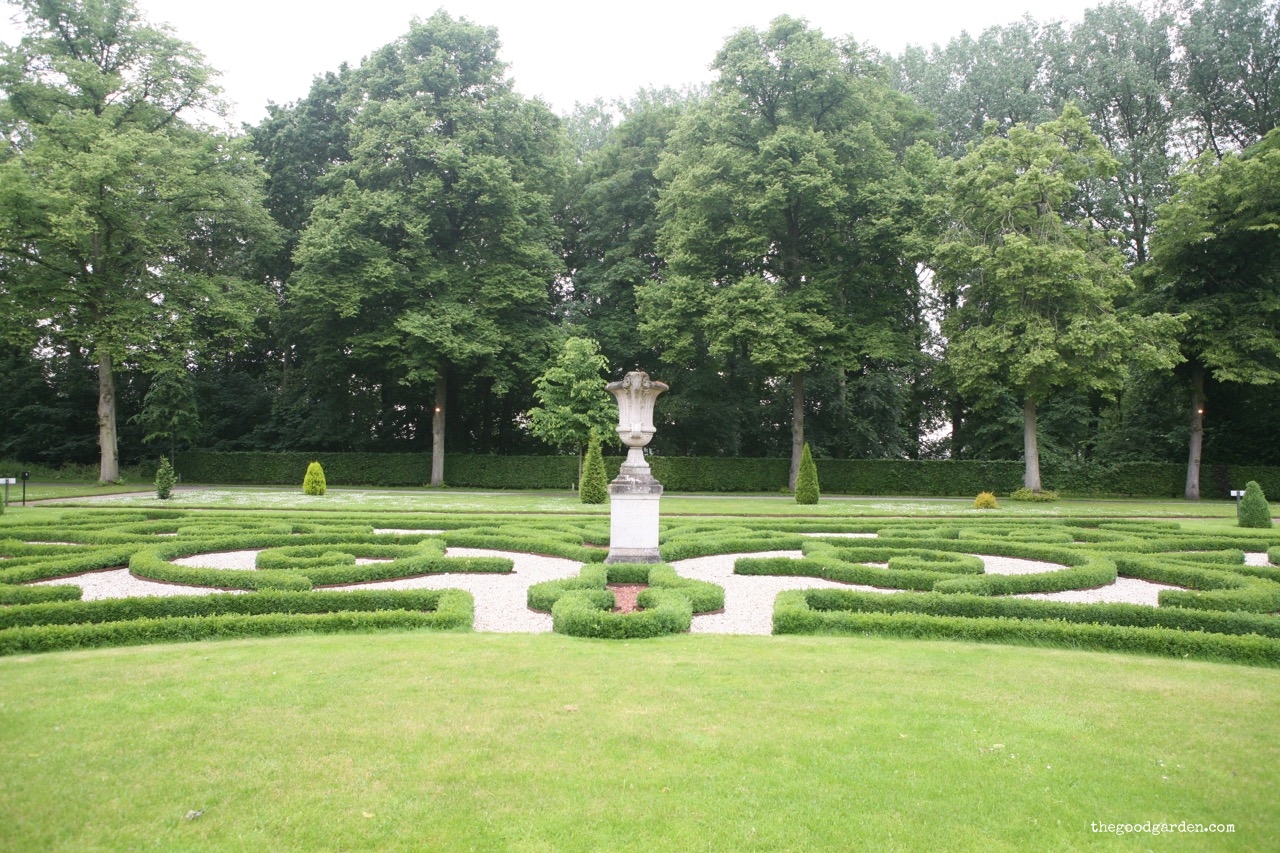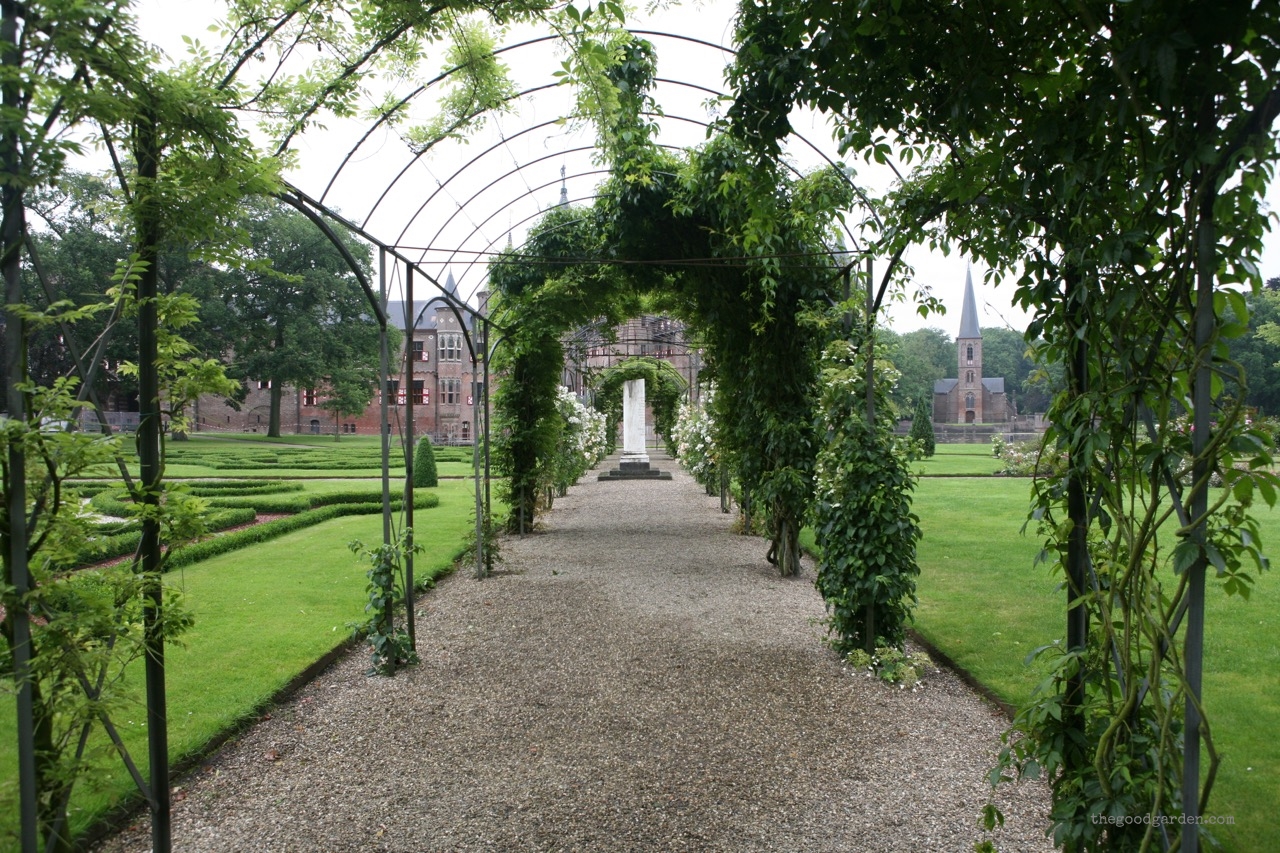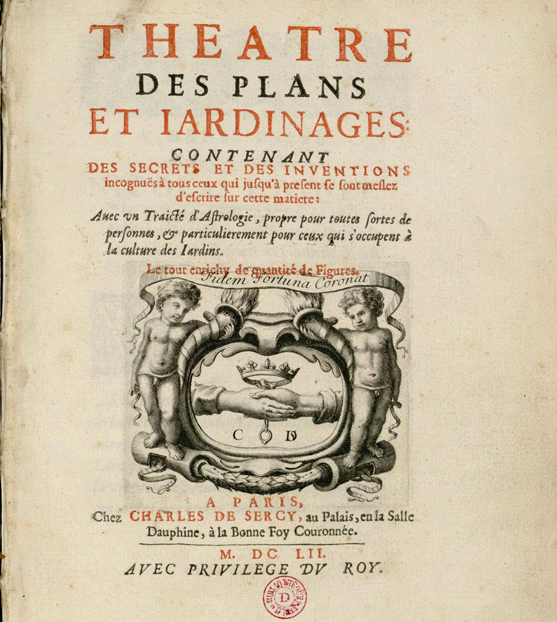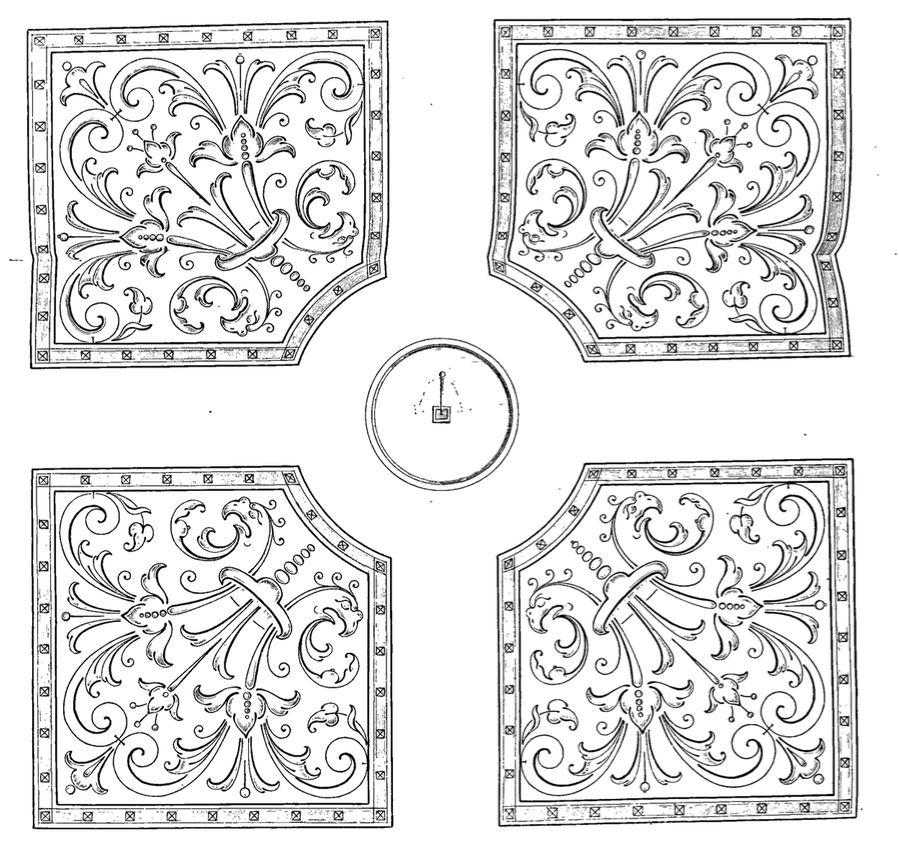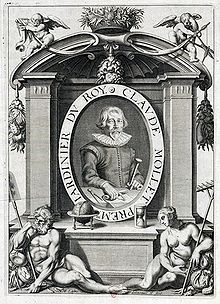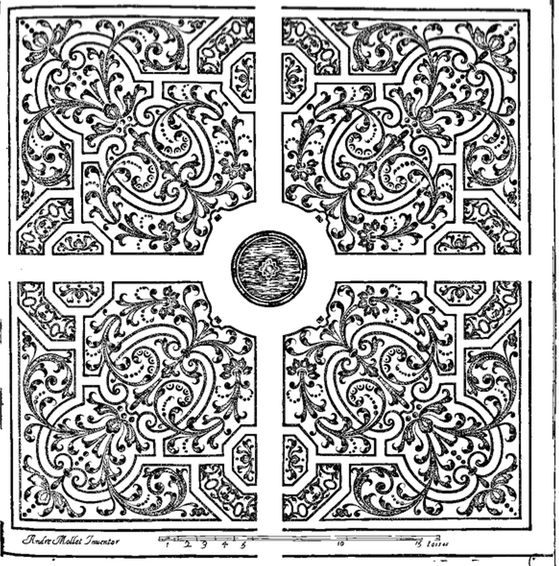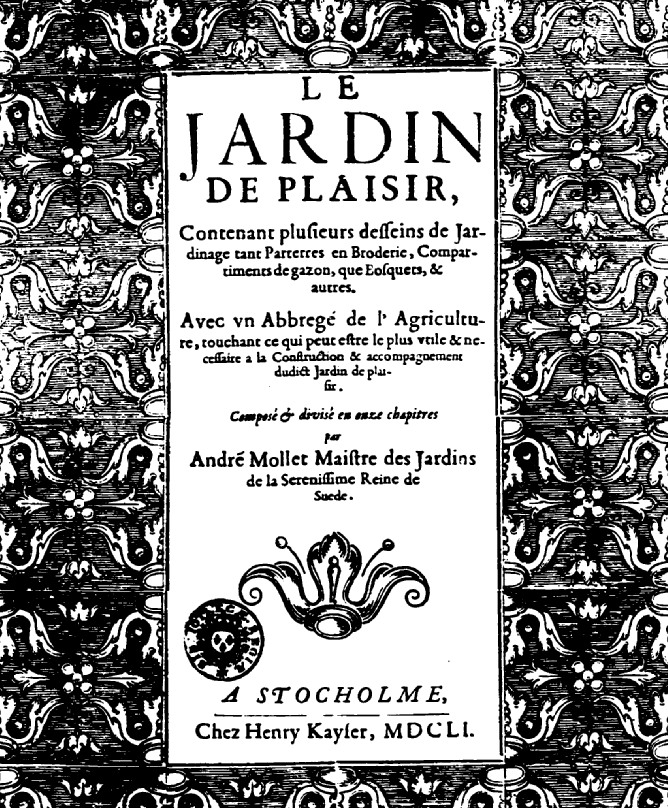Looking for a formal garden element to add history to your castle? You might want to consider a parterre broderie. ‘Parterre’ refers to a flat garden divided into planting beds, and ‘broderie’ means embroidery, referring to a lace-like design. This style combines symmetrical patterns of flowing lines and punctuation. To me these designs have a musical feel. Especially fun to see from above, just let your eye trace the patterns and appreciate the precision of the complex curves and symmetry. These gardens can be framed in box or just be elaborately edged with turf grass. The key is the contrast between the plant material and an earth or gravel base that lets the pattern pop.
This interest in creating contrasting surfaces and textures dates from the late 1500’s and was refined by the Mollet family of French royal gardeners. Claude Mollet provided patterns for parterre gardens in his 1612 book Theatre des Plans et Jardinages and his son Andre Mollet reinforced the importance of the broderie garden in his 1651 book Le Jardin de Plaisir, “The pleasure garden.” In it he explains that the broderie garden should be placed at the rear of the house, close enough to be seen from windows above.
We can see famous examples from the 1700’s at the Chateau de Versailles, Het Loo Palace, and Hampton Court. The broderie garden remained popular until the picturesque style took over. In recent times, broderie gardens have been incorporated by designers seeking to add a formal touch or to give a garden a sense of history.
The parterre broderie from above. Found on viajerosdelmisterio.es.
The beautiful example above was installed recently, around 1900, at Castle de Haar. The castle dates from 1390 and its function as a fortress can still be seen in the surrounding moat. By the 1800’s the castle had passed through several families and fallen into ruin. Around 1890, a new heir to the castle, Etienne van Zuylen, married Helene de Rothschild. Helene’s family financed a complete restoration for the couple (despite dis-inheriting her for marrying a Roman Catholic). Two-hundred rooms and 30 bathrooms were renovated and a modern kitchen and electrical system were installed. The project took over 20 years!
For the garden they selected designer Hendrik Copijn who installed an English picturesque park. Not wanting to wait to see the full effect of the design, he shipped in over 7,000 mature trees. Close to the castle, formal gardens were installed in the style suggested by Andre Mollet’s 1651 text. This style is more appropriate to the architecture of the castle and grounds.
Castle de Haar is located outside of the wonderful medieval Dutch town of Utrecht. Utrecht’s canaled center city area is full of lively restaurants, a weekly farmers market, and of course a cloister garden. Don’t forget to visit the music box museum which offers a tour where many of the pieces are played. A real treat. You’ll need a car to get to the castle, but driving through the beautiful countryside is worth it. Because of the location of the visitor’s center, you’ll enter the garden from the rear so the broderie and the rose gardens are the first you’ll see. Don’t miss the walking paths through the picturesque woodland. Views of the castle framed by the pond are just perfect.
Garden architect, Hendrik Copijn (1842-1923). Source unknown.

